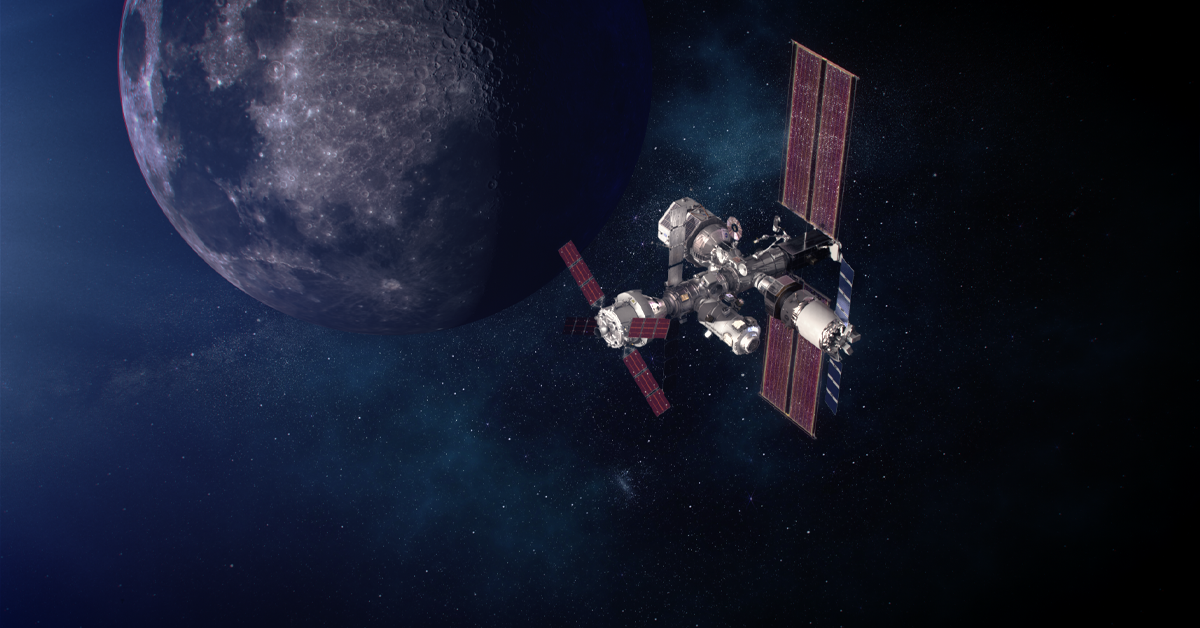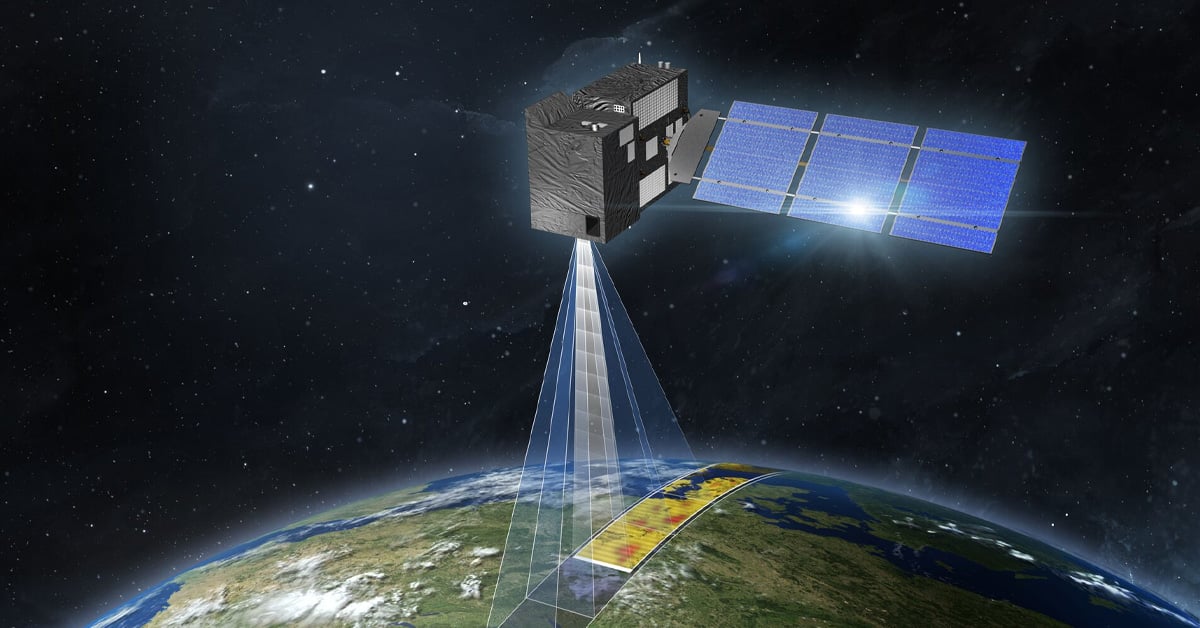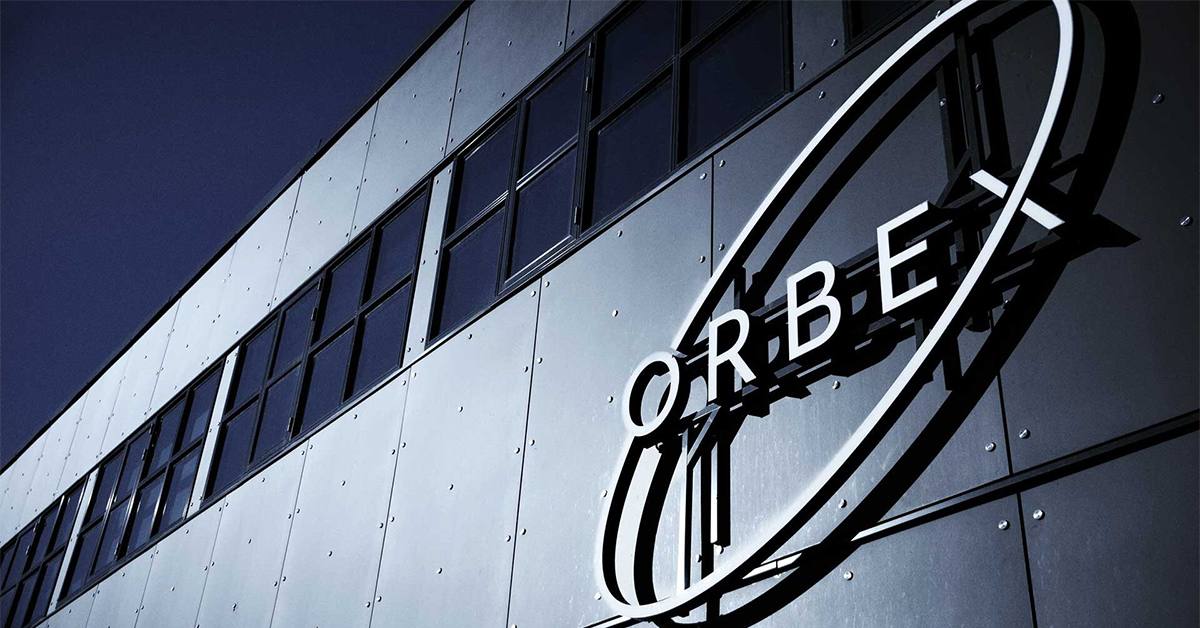Objective: Save the Earth. The story of Terma & Flux
The cooperation between Terma and Flux is something of a fairytale: A Danish collaboration with a global perspective that has been running for more...
4 min read
![]() FLUX News Desk
Nov 4, 2025 11:06:11 AM
FLUX News Desk
Nov 4, 2025 11:06:11 AM

The lunar Gateway will become the new stepping stone into deeper space exploration. Launched in several different steps starting in 2027/2028 – when the Power and Propulsion Element (PPE) and the Habitation and Logistics Outpost (HALO) will be sent into space by NASA – it is scheduled to be fully operational by 2030 and will represent the finest achievements from all over the globe.
On an ever more divided planet, it is encouraging to see how nations from all over the world come together to explore outer space collectively.
The objectives of the Gateway are manyfold, and so are the contributors. NASA is leading the mission with CSA (Canadian Space Agency), JAXA (Japan Aerospace Exploration Agency), and – of course – ESA (European Space Agency) as key contributors.
The Gateway is a gamechanger. Unlike the current International Space Station (ISS), it will not be orbiting the Earth, but the Moon, and when in place, it will serve as a habitat, a refuelling, and research centre for astronauts exploring the surface of Moon and beyond as part of the hyper ambitious Artemis program.
The Artemis program comprises several different launches. Back in 2022, Artemis I was launched and through the 2020’s a total of five separate missions will constitute the overall program. Artemis IV – scheduled for 2028 – will be the mission to bring ESA’s first components of the Gateway, the I-Hab module, in place.
The I-Hab, as the name suggests, will serve as the habitat for the astronauts involved, as well as one of the stations for conducting experiments. It will be added to the HALO and the PPE, making the Gateway habitable. In addition to the I-Hab, Artemis IV will also transport the first astronauts to make use of the Gateway.
By 2029, Artemis V is set to launch, and it will bring along with it the bulk of ESA’s contribution to the Gateway: European System Providing Refuelling, Infrastructure and Telecommunications (ESPRIT) consisting of the Lunar View and the Lunar Link. As indicated by the name, the ESA components are tasked with supplying refuelling, communication systems and storage for the Gateway mission.
In other words: ESA and its contributors play a vital role in this new and revolutionising chapter of space exploration.
Among ESA’s suppliers, we find nanoTRONIC. Based in Lyss, Switzerland, the engineering company specialised in electric and software development have been designing and producing components for the most demanding of industries for years.
nanoTRONIC’s contributions to the Gateway mission are of huge significance. First of all, they are responsible for supplying a pump motor controller for the thermal fluid centrifugal pump, enabling the thermal compression of xenon.
As part an parcel of these controllers, the Electro Magnetic Interference filters, or EMI filters, emerge. These filters play a crucial role, as they minimise or eradicate the surrounding interference, making sure that the hyper sensitive pump controller funtions adequately. When operating more than 400,000 km. from the surface of the Earth, even smallest of interferences contains the possibility of causing catastrophe. In other words: the EMI filters are the silent heroes among roaring titans.
”You don’t just start off with an ESA project,” Silas Wiedmer, Systems & Development Engineer at nanoTRONIC, explains. ”We started on a way smaller scale, where you learn your skills, and worked our way up to ever more complicated projects. You really need to prove your worth and show that everything works. It’s step by step, just like the Gateway.”
For this mission in particular, nanoTRONIC was tasked with developing a whole new product, but that is easier said than done when working within the extremely rigorous demands of the space industry. ”Everyone is asking for heritage because heritage means low risk,” Silas Wiedmer sumarises. ”New products are always difficult, as the development costs are very high. Usually, there is a large number of iterations before we reach the final design, and because of the heritage of the project, we stick to what we know and trust.”
”We have a long-standing collaboration with Flux when it comes to space qualified components. We know the people, we know how to work with them, and in order to work with us, one really has to be agile. If we have a request, you really have to open to integrate our ideas, especially on a project like the Gateway.” And Wiedmer elaborates:
”The Gateway is extremely complex on the technical side. For one thing, it’s a human space flight, but that’s not all. We are used to work within the ECSS framework (European Cooperation for Space Standardization), the space standards applicable for Europe, but on the Gateway we have a mixture of all sorts of standards. NASA is using NASA’s standards, Europe is using Europe’s standards, Japan are using their standards etc. These are different ways of working and that complicates matters further.”
That is where long-term partnerships become invaluable – and where Flux enters the scene: ”We needed inductors with a certain current rate, and Flux really dives into the detail to find the right cores and the right wires, making sure that the cores don’t get exaggerated and behave thermally in the right way. These are all important details that Flux are capable of delivering.”
”What was special in this case was that we didn’t just ask for one single component but for the whole structure of the EMI filters, and this filter contains multiple different inductors.” Luckily, we were up for the task and we are extremely proud of our contribution.
As the Gateway slowly takes shape, it reminds us that exploration is never a solitary pursuit. It is built, detail by detail, by countless specialists who make complexity look effortless. In that sense, Flux, and nanoTRONIC embody the very essence of progress: quiet dedication in the service of something greater.
Although executed and funded in the scope of a program by the European Space Agency – ESA, this post does not reflect any position of the agency.


The cooperation between Terma and Flux is something of a fairytale: A Danish collaboration with a global perspective that has been running for more...

In the realm of space exploration, precision and reliability are paramount. The pioneering UK-based space company, Orbex, has partnered with Flux to...

As the automotive industry pivots toward electrification and smarter energy solutions, the demand for high-performance electromagnetic components is...